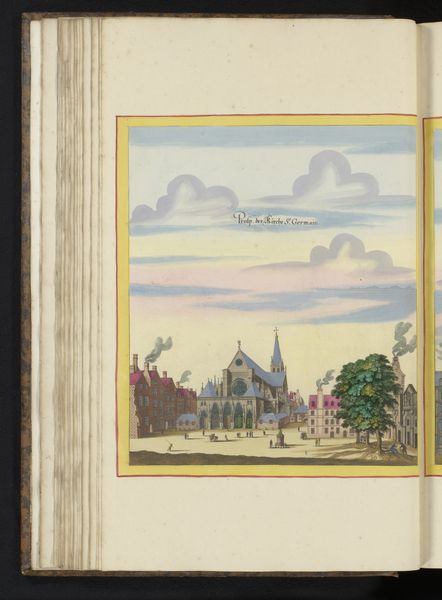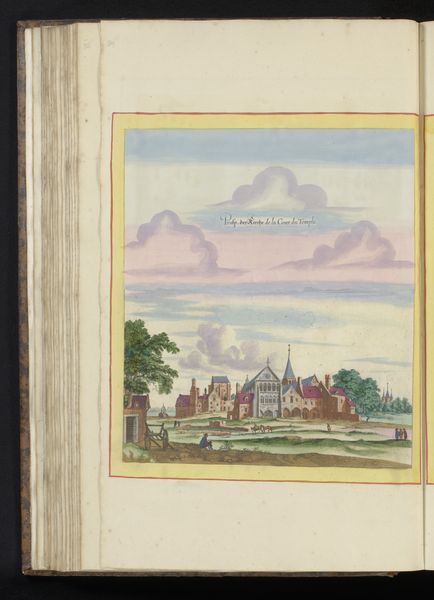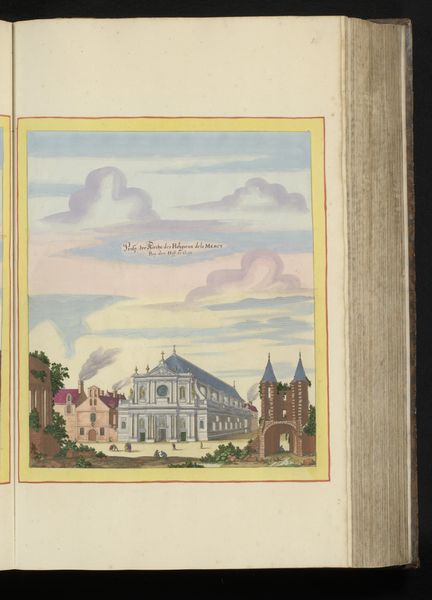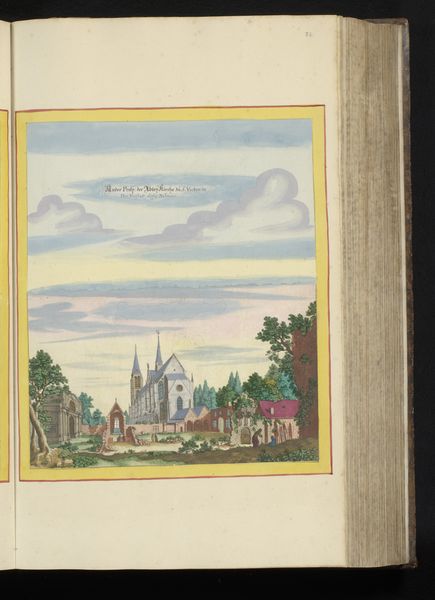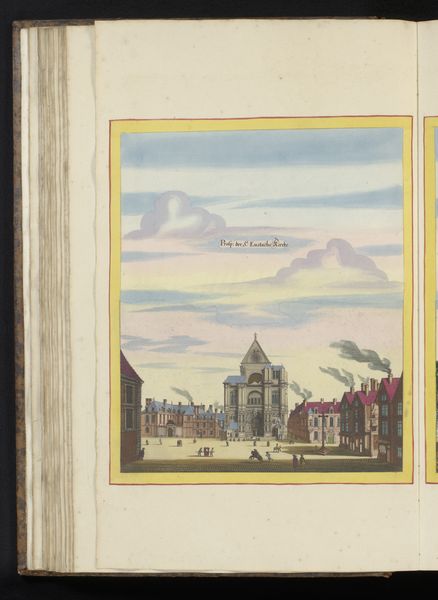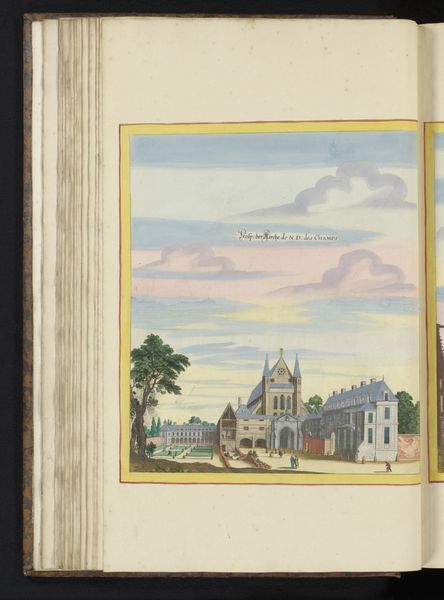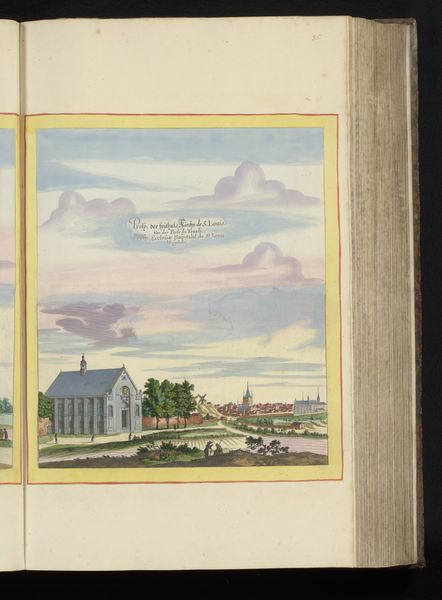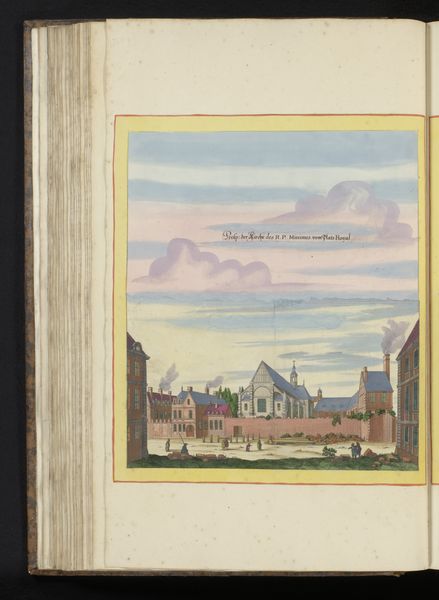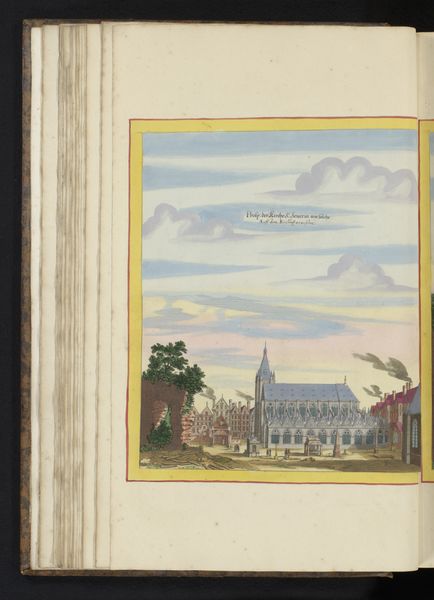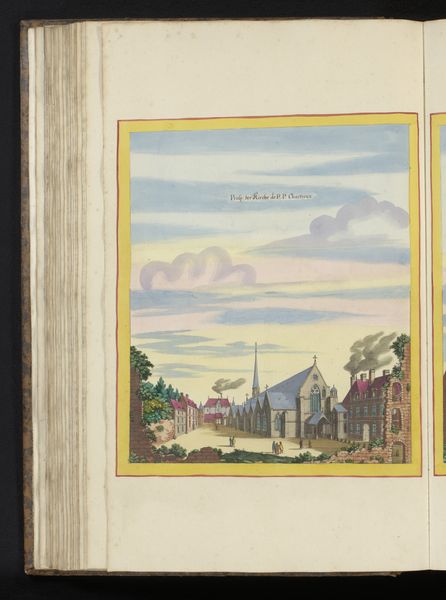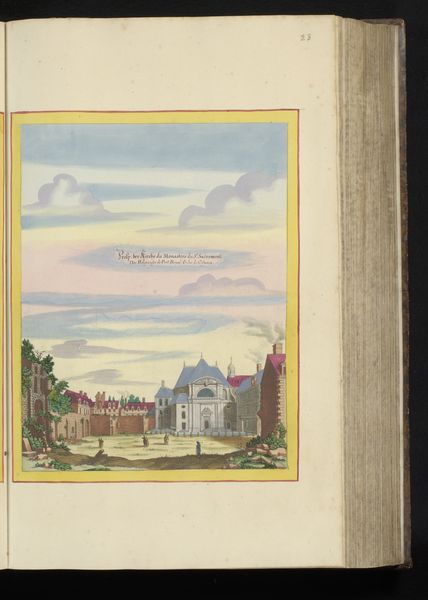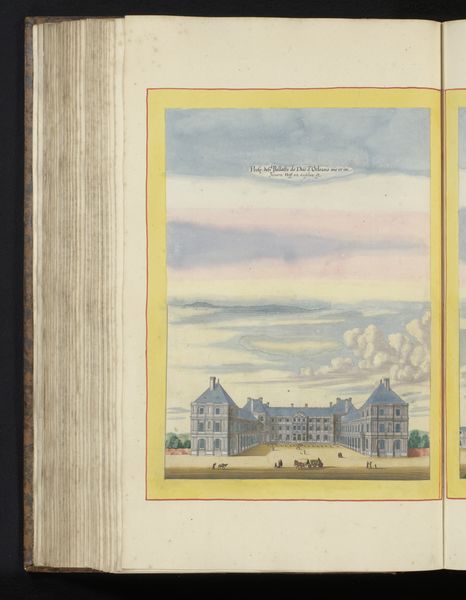
painting, watercolor
#
baroque
#
painting
#
landscape
#
watercolor
#
cityscape
#
watercolor
Dimensions: height 336 mm, width 278 mm, height 534 mm, width 330 mm
Copyright: Rijks Museum: Open Domain
Editor: So, here we have Matthäus Merian's "Zijaanzicht van de abdijkerk van Saint-Victor te Parijs," a watercolor cityscape from 1655, currently at the Rijksmuseum. It strikes me as incredibly detailed, especially considering the scale. What draws your eye when you look at it? Curator: For me, it’s the political subtext lurking beneath this seemingly serene landscape. Remember, the mid-17th century was a turbulent time in France – religious conflicts, rising absolutism...How might this detailed depiction of a prominent religious site function within those tensions? Editor: Are you suggesting it might be a statement about power, perhaps the church aligning itself with a certain faction? Curator: Precisely! Consider the intended audience for these kinds of prints. Were they meant for public consumption, reinforcing a certain image of stability and piety, or perhaps circulated amongst a more elite, politically engaged group? What visual cues might support those hypotheses? Editor: I see. The church dominates the skyline, even dwarfing what appear to be ordinary houses. That might subtly convey the church's importance, or even dominance. Curator: And how does that connect to the evolving role of religious institutions within 17th-century French society? Was it simply documentation or, as I believe, subtle visual propaganda? Editor: Thinking about the political climate certainly adds another layer of understanding. I originally just saw a pretty landscape! Curator: That's the beauty of art history. What seemed self-evident on the surface turns into something deeply connected to culture, power, and identity. Editor: Thanks, I hadn't really considered art's persuasive role like this. Now I see it!
Comments
No comments
Be the first to comment and join the conversation on the ultimate creative platform.
